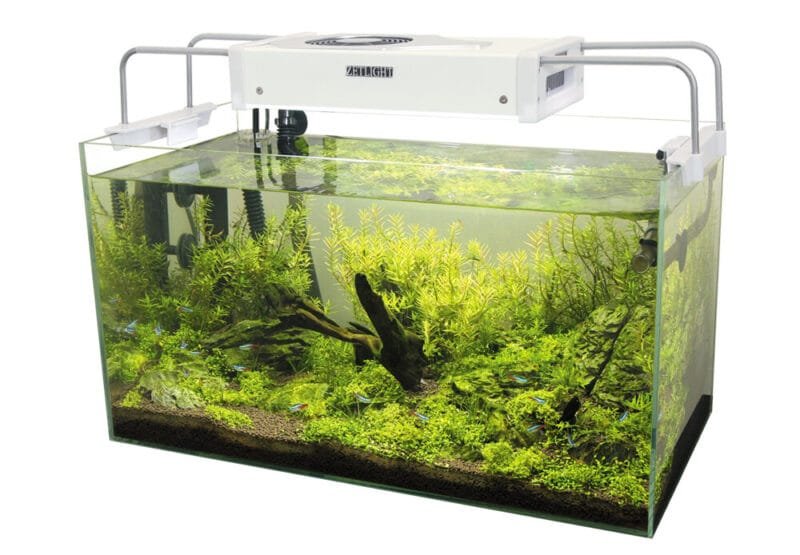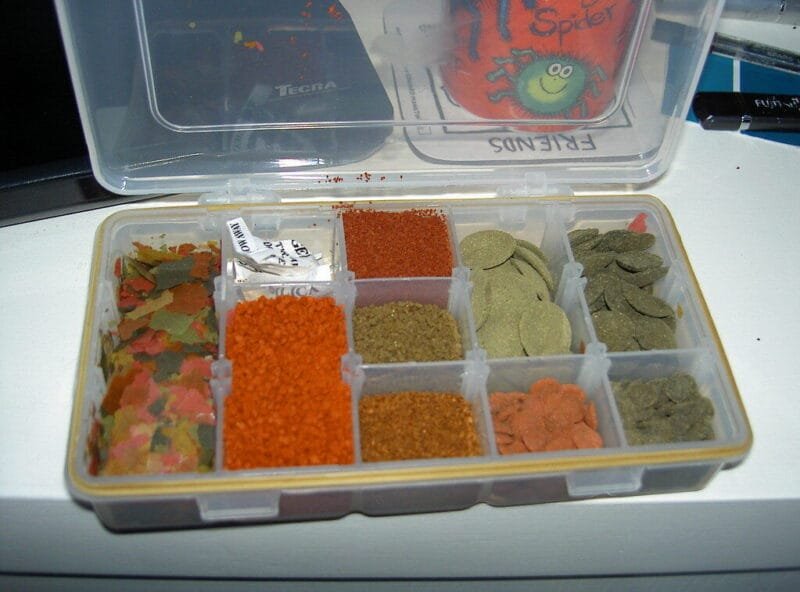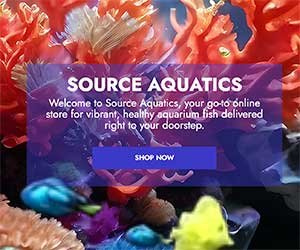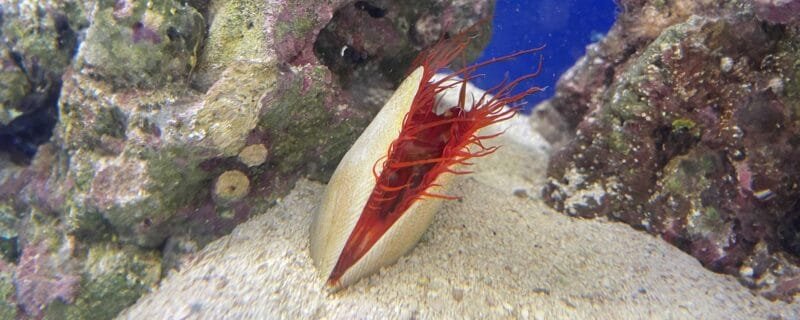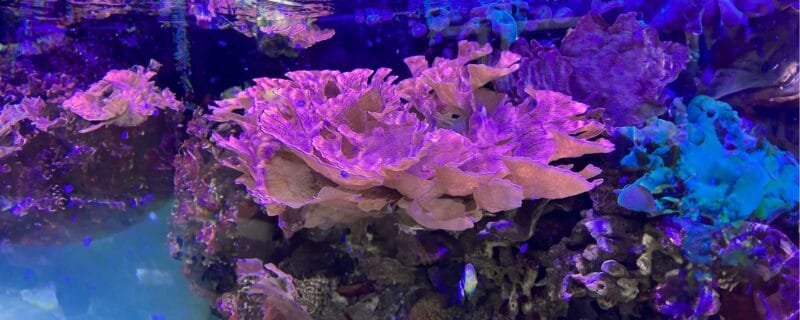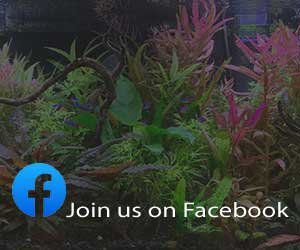You may be excited to start your aquarium journey, but it’s easy to overlook key details that can lead to problems. In this list, you will discover the top 10 mistakes new aquarium owners often make and how to effectively avoid them. From improper equipment choices to neglecting water quality, understanding these pitfalls will empower you to create a thriving aquatic environment. By being informed and proactive, you can enjoy a beautiful aquarium without the common setbacks that many first-timers face.
Key Takeaways:
- Inadequate cycling of the tank can lead to poor water quality and stressed fish; ensure a proper nitrogen cycle before introducing livestock.
- Overfeeding fish is common; follow guidelines to prevent water pollution and health issues.
- Neglecting regular maintenance, including water changes and filter cleaning, can result in an unhealthy aquarium environment.
Overcrowding the Tank
One of the most common mistakes new aquarium owners make is overcrowding the tank, which can lead to a host of problems, including poor water quality and stressed fish. It’s vital to understand the limitations of your aquarium’s size and the needs of your aquatic pets. Maintaining a balanced environment will ensure your fish thrive and your aquarium remains healthy.
Too Many Fish
Adding too many fish in a small tank can lead to crowded conditions, increasing stress and competition for resources. Always research the adult size and bioload of your chosen species to avoid exceeding your tank’s capacity.
Ignoring Species Compatibility
Choosing fish without regard for species compatibility can create conflict and aggression in your aquarium. Matching temperaments and environmental needs is necessary for a harmonious tank.
When you ignore species compatibility, you risk introducing aggressive fish that may harass or even kill your more docile species. It’s important to select fish that share similar temperaments and water requirements. Consider social behaviors; for instance, schooling fish need to be in groups, while solitary species may require dedicated space. Conduct thorough research on each species’ needs to foster a peaceful community tank.
Inadequate Filtration
Inadequate filtration is a common mistake that can lead to poor water quality, harming your fish and plants. Selecting an appropriate filter is vital, as it helps to remove toxins, debris, and harmful bacteria from your aquarium. An undersized or inefficient filter can’t keep up with waste, resulting in a toxic environment and unhealthy aquatic life. Invest in a quality filtration system to ensure a thriving aquarium.
Incorrect Filter Size
Selecting an incorrect filter size can compromise the health of your aquarium. A filter that is too small will struggle to process the water, leading to increased toxin levels, while an oversized filter may create excessive water flow that can stress fish. It’s necessary to choose a filter that matches your tank’s dimensions and the specific needs of your aquatic inhabitants.
Neglecting Routine Maintenance
Neglecting routine maintenance can severely impact your aquarium’s ecosystem and your fish’s health. Regular cleaning of your filter and replacing or cleaning filter media are necessary steps to maintain optimal water quality. Failing to do so can lead to a buildup of waste and harmful bacteria, drastically reducing oxygen levels in the water. Establish a consistent maintenance schedule to keep your tank and its inhabitants thriving.
Poor Water Quality
Poor water quality is a common pitfall for new aquarium owners that can lead to serious health issues for your fish. Maintaining stable parameters such as pH, ammonia, nitrites, and nitrates is crucial. Inadequate monitoring can cause stress and disease, impacting the overall ecosystem of your aquarium.
Inconsistent Testing
Inconsistent testing of your aquarium water can result in undetected fluctuations that harm your fish. Regularly using reliable test kits ensures you stay informed about your water chemistry, allowing you to make necessary adjustments before issues arise.
Skipping Water Changes
Skipping water changes can lead to the accumulation of toxins and waste products in your aquarium. This negatively affects your fish’s health and the overall balance of the ecosystem. Regular water changes are vital to dilute harmful substances and replenish crucial nutrients.
When you skip water changes, you allow harmful ammonia and nitrite levels to spike, causing stress and potentially leading to fish death. Performing regular water changes not only helps to maintain clear and clean water but also supports the beneficial bacteria that aid in breaking down waste. Aim for a schedule that fits your aquarium size; typically, changing about 10-20% of the water weekly can greatly enhance your aquatic environment.
Wrong Tank Location
Choosing the right location for your aquarium is vital for maintaining a healthy environment. If you place your tank in an unsuitable area, it can lead to stress for your fish and complications in care. Assess factors like light, temperature, and accessibility to ensure your aquarium thrives.
Excessive Sunlight
Placing your aquarium in direct sunlight can cause rapid temperature fluctuations and promote algae growth. To maintain a stable environment, avoid positioning your tank where it receives harsh sunlight, instead opting for a spot with indirect light.
Vibrations and Noise
Your aquarium should be situated away from sources of vibrations and noise, such as speakers or busy foot traffic. These disturbances can stress your fish, affecting their health and overall well-being.
Stress from vibrations and noise can lead to aggression and illness in your fish, as they feel threatened and uneasy in their environment. Ensuring that your aquarium is located in a calm, quiet space can enhance your fish’s happiness and health. Aim to place your tank in an area that minimizes disruptions to help your aquatic pets thrive and create a serene aquatic habitat.
Overfeeding Fish
Overfeeding fish is a common mistake that can lead to serious health issues in your aquarium. Excess food decomposes, causing poor water quality which can harm your fish and lead to algae blooms. To keep your aquatic ecosystem healthy, understand portion sizes and feeding habits of your fish species.
Improper Portion Control
Improper portion control can result in uneaten food accumulating at the bottom of your tank, leading to toxic ammonia buildup. Always observe your fish’s feeding behavior and provide only what they can consume in a few minutes to maintain optimal tank conditions.
Ignoring Feeding Schedules
Ignoring feeding schedules can disrupt your fish’s natural feeding behavior and create stress. Establishing a consistent routine helps your fish feel secure and improves their health. Regular feeding times also allow you to monitor any changes in appetite, indicating potential health issues.
Feeding your fish at the same times each day fosters a sense of stability and security, which is beneficial for their overall well-being. Additionally, a consistent schedule makes it easier to track their eating habits; if you notice a drop in appetite, it may signal distress or illness, allowing for timely intervention. Aim for the same time each day, so your fish can adjust to their routine.
Lack of Research
Many new aquarium owners dive in without conducting thorough research, which can lead to a host of avoidable issues. Understanding the specific requirements of your aquarium setup, including water chemistry, temperature, and filtration, is necessary for keeping fish healthy. Skipping this vital step can result in fish stress, illness, and even death, ultimately leading to a frustrating experience.
Choosing Difficult Species
When dicking out fish for your aquarium, avoid picking difficult species that require advanced care and specific conditions. Beginners often opt for exotic fish without realizing that these species may need special diets, precise water parameters, or specific tank mates. Stick with hardy species that can adapt to beginner standards for a thriving aquarium.
Ignoring Specific Needs
Your fish have unique requirements that must be met for them to thrive. Ignoring specific needs, such as tank size, social behavior, and dietary preferences, can lead to poor health and compatibility issues. It’s necessary to research each species to understand their habits and create an environment conducive to their well-being.
For instance, some fish may require a larger tank due to their adult size, while others thrive in groups and can experience stress if kept solo. Additionally, dietary needs can include special foods or supplements. By taking the time to learn about these specific needs, you’ll set your aquarium up for success and minimize stress on the fish, ultimately leading to a more enjoyable hobby.
Ignoring Cycling Process
Many new aquarium owners overlook the cycling process, which is necessary for maintaining a healthy environment for your fish. This process establishes beneficial bacteria that help break down harmful toxins produced by fish waste. Without cycling, your aquarium can quickly become toxic, leading to stress or loss of your aquatic pets.
Skipping Nitrogen Cycle
By skipping the nitrogen cycle, you risk creating a hazardous environment for your fish. This cycle converts harmful ammonia into less toxic substances. Failing to establish this process means that your fish are exposed to high levels of ammonia, which can cause serious health issues or even death.
Adding Fish Too Soon
Adding fish too soon is a frequent mistake made by new aquarium owners. Placing fish in an uncycled tank can expose them to ammonia spikes and stress, ultimately endangering their health. It is advisable to wait until the nitrogen cycle is complete before introducing any fish to ensure a stable environment.
By adding fish before the tank is fully cycled, you increase the risk of ammonia and nitrite toxicity, which can severely harm your fish. You should wait at least several weeks for the cycling process to complete, testing water parameters regularly to ensure safe levels before adding any new inhabitants. Doing so helps create a thriving aquatic ecosystem that supports healthy fish and avoids costly mistakes.
Not having a backup plan
As a new aquarium owner, having a proper backup plan is crucial for maintaining your fish and their habitat. Without one, unexpected situations like equipment failure or emergencies can lead to devastating outcomes for your aquatic life. Prepare yourself by anticipating potential issues and having solutions ready at hand to ensure your aquarium remains a healthy environment.
Emergency kit absence
An emergency kit is vital for any aquarium owner. If you lack crucial supplies such as water conditioners, spare filters, or medications, you risk your fish’s health during unforeseen circumstances. Stock your kit with necessary items to quickly address problems and minimize stress on your aquatic friends.
Power outage solutions
Power outages can threaten your aquarium’s ecosystem, jeopardizing filtration and heating systems. Having backup solutions, such as battery-operated air pumps and portable heaters, will help you maintain stable conditions until power is restored. Your fish depend on you to keep their environment safe during these emergencies.
To effectively manage a power outage, consider investing in a battery-operated air pump, which ensures oxygen circulation in the tank when the main filter is offline. Portable heaters can help maintain the appropriate water temperature while you wait for electricity to return. Additionally, keep a backup generator or uninterruptible power supply (UPS) ready for longer outages. Regularly check your emergency kit and solutions to ensure they are functional, allowing you to be prepared for any disruption that may arise.
Improper Tank Setup
Setting up your aquarium correctly from the start is vital for the health of your fish. An improperly configured tank can lead to water quality issues, stress for your aquatic life, and ultimately, fish fatalities. Ensure you research the specific needs of your fish and provide the right environmental conditions to create a thriving ecosystem.
Unstable Ornaments
Using unstable ornaments in your aquarium can create hazards for your fish. Loose decorations may fall over, potentially injuring or even killing your fish. Always choose weighted or securely anchored pieces to ensure your fish are safe while they explore their habitat.
Inadequate Hiding Spots
Providing enough hiding spaces in your aquarium is vital for the well-being of your fish. Fish can be extremely sensitive to stress, especially in a new environment. Insufficient hiding spots can lead to anxiety, making your fish feel vulnerable and exposed. Enrich your tank with hiding spots using rocks, plants, or commercially available decorations.
Fish instinctively seek out hiding spots to mitigate stress and establish territory. Without adequate shelter, species that are shy or territorial can exhibit signs of aggression or illness. Incorporate a variety of hiding spaces, ensuring they are appropriately sized for your fish. This not only fosters natural behavior but also enhances the visual appeal of your tank, creating a more dynamic and healthy ecosystem for your aquatic companions.
To wrap up
On the whole, avoiding the top 10 mistakes new aquarium owners make is imperative for the success of your aquatic environment. By implementing proper research, being mindful of tank cycling, selecting compatible fish, and maintaining regular water quality checks, you can create a thriving habitat. Prioritize education and patience throughout your aquarium journey, ensuring your efforts lead to a beautiful and healthy ecosystem. By staying informed and attentive, you will enjoy the rewarding experience of aquarium ownership without the common pitfalls that can often arise.
FAQ
Q: What are the common mistakes new aquarium owners make regarding tank size?
A: Many new aquarium owners underestimate the importance of tank size. Smaller tanks can lead to unstable water conditions, causing stress to fish. It is advisable to start with a minimum of 20 gallons to maintain a more stable environment. Always consider the adult size of the fish when selecting the tank size.
Q: How do new aquarium owners often mismanage water quality?
A: New owners frequently neglect regular water testing and maintenance, which can lead to harmful conditions for fish. It is important to test water parameters such as pH, ammonia, nitrites, and nitrates regularly. Performing water changes of 10-15% weekly helps maintain good water quality.
Q: What mistakes do new aquarium owners make regarding fish selection?
A: New owners often choose incompatible fish species without considering their temperaments and environmental needs. It is imperative to research fish species beforehand and select those that can coexist harmoniously in the same tank. Always consider the adult size and social behavior of the fish to prevent conflicts.

